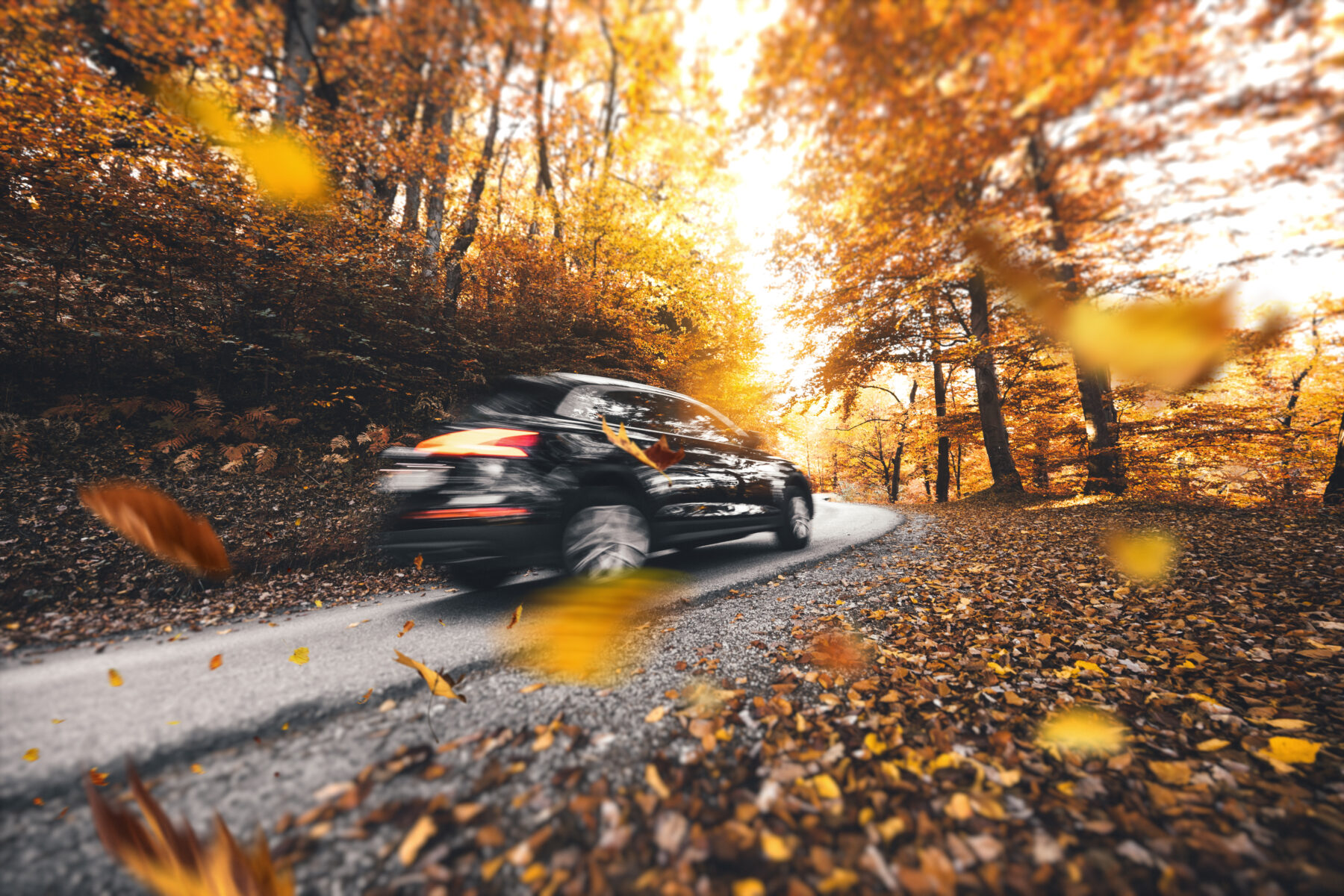Even if you obey traffic laws, you can’t always avoid accidents. Although vehicles are manufactured with more safety measures than ever before, car crash rates have been rising. Your chances of being involved in a motor vehicle accident are 1 in 366 for every 1,000 miles that you drive. Understanding the most common causes of collisions can help even the best drivers take measures to reduce their risk of accidents.
Ignoring Other Drivers
If you’re not paying attention to other vehicles on the road, you may not notice when someone slams on their brakes in front of you or swerves into your lane. While it’s important to focus on your own driving, you need to be aware of other drivers.
Doing this helps you anticipate their behavior on the road so that you can avoid hazardous situations. Watching out for other cars also allows you to respond quickly to surprises.
Here are some ways to be more vigilant of other vehicles while you drive:
• Check the cross streets before moving ahead when your light turns green.
• Don’t attempt to pass a car that is swerving erratically.
• Make sure that another vehicle is not attempting to merge into the same lane as you.
• Keep track of surrounding cars so that you can make a confident decision if you suddenly have to swerve around an obstacle.
• Scan the road, looking far enough ahead as well as in your mirrors; don’t stare at the tail lights in front of you.
Driving Distractedly
You really shouldn’t focus on much besides the road, other vehicles and your driving when you’re operating a motor vehicle. If you take your eyes off the road, your hands off the wheel or your mind off of the activity, you’re driving distractedly and could miss signs of danger.
The most common causes of distracted driving include:
• Texting or manipulating your phone
• Talking on the phone
• Eating
• Looking or reaching for something
• Operating dashboard controls
• Talking with passengers
• Looking at external distractions
• Smoking
Driving Too Slowly
Most people know that speed increases their chances of crashing, but driving too slowly is also problematic. Moving significantly slower than the surrounding cars forces other drivers to react differently than they were expecting. These other drivers often respond by making unsafe judgment calls.
Some might brake hard to slow down, putting them at risk of a rear-end collision. Other drivers may speed up and weave through traffic out of frustration.
The situation can quickly cause chaos and confusion. Slow driving also makes it difficult for other drivers to gauge your position and speed when turning or crossing in front of you.
Some tips for handling a slow driver safely are as follows:
• Stay patient and maintain your distance so that you can make safe decisions.
• Look in front of the vehicle to ensure that there is no obstacle ahead.
• Flash your headlights briefly to alert them.
• Evaluate whether you can pass them safely.
Trying to Beat the Red Light
People have a greater risk of being injured in a collision that involves running a red light than any other type of car crash. Yellow lights are timed so that a car moving at the posted speed limit can either stop safely if they apply the brakes or clear the intersection if they maintain the posted speed. But drivers often misjudge the distance or speed up so that they don’t have to stop at the red light.
Faster speeds cause more injuries. When the light in the intersection turns green, many drivers expect that they can safely go. Getting hit by someone who ran the red light can be devastating.
When you see a yellow light, you can clear it safely if you’re within 100 feet of the intersection. If not, apply your brakes gradually and slow to a stop. Getting into the habit of slowing down cautiously as soon as you see a yellow light can prevent you from slamming on your brakes or misjudging the timing.
Driving Under the Influence
You know that you shouldn’t drink and drive. But were you aware that you shouldn’t drive while under the influence of any factor that affects your judgment or slows your reaction time? Driving while you feel lightheaded, spacy, dizzy or are in an altered mental state can put you at risk for an accident.
These include:
• Certain medications that are legitimately prescribed by your doctor
• Marijuana, even if it is used medically
• Recreational drugs
• Meditation
• Extreme fatigue or sleep deprivation
Keep in mind that alcohol affects you more intensely on an empty stomach too. Drinking two beers after a day of fasting will likely elevate your blood alcohol level more and for a longer period of time than consuming the same amount with a meal.
Aggressive Driving
Driving is not a race or a contest. Even if you’re in a rush, you should obey the rules of the road. When you’re frustrated by something that another driver is doing, becoming aggressive won’t solve the problem.
Aggressive drivers often make unpredictable or illegal maneuvers. They may distract other drivers or make poor judgment calls.
Some common mistakes that aggressive drivers make include:
• Failing to use turn signals
• Tailgating
• Refusing to allow other drivers to change lanes
• Erratic driving
• Failure to follow road safety signs
• Neglecting to yield the right of way
If you experience road rage while you’re driving, take some time to pull over and cool off. Removing yourself from the frustrating situation is usually enough to calm down and gain some clarity. You can use the same advice to stay safe when another driver is being aggressive.
Failing to Take the Weather Into Account
The weather should influence the way that you drive. However, many motor vehicle operators fail to adjust their driving for the elements.
Below are some tips for navigating in bad weather:
• Stay alert.
• Drive at least 50 feet away from the vehicle in front of you.
• Slow down and move at a safe speed.
• Avoid slamming on your brakes in slick, low visibility or wet conditions.
• Understand how your brakes and anti-lock braking system work.
• Avoid using cruise control.
In some states, it’s illegal to move your vehicle with the flashing hazard lights on. However, according to Texas law, driving with your hazards on is legal. Individuals can decide whether to turn on their hazard lights in a heavy storm. Doing so may improve the chances that other drivers will see you. However, you should remember that in other states, hazard lights signal that the vehicle is stopped.
Disregarding Road Conditions
If you get in an accident due to a poorly maintained road, you might be able to file a claim and seek damages. But you can also avoid a collision by adjusting your driving to the road conditions.
Some of the road conditions that cause accidents are:
• Flooding
• Potholes
• Shoulder drop-off
• Construction work zones
• Cracked asphalt
• Root intrusion
• Vegetation overgrowth
• Faded or confusing road markings
It’s important to increase your alertness and slow down when dealing with these road conditions. Avoid coming to a quick stop if possible, and reduce your speed gradually. If you have to swerve, try not to overcompensate, which can cause you to lose control of your vehicle.
Misjudging Other Drivers
When you drive, you have to make real-time decisions based on the way that you expect other drivers to act. In a perfect world, we would assume that everyone would follow traffic and safety rules. But that’s not always the case. You don’t have to assume that everyone is driving illegally, but be cautious.
Some tips for using proper judgment while driving defensively include the following:
• Even if another driver has their turn signal on, wait until they begin the turn before pulling out in front of them.
• If you don’t think you have time or room to change lanes or pull into an intersection, wait.
• Make sure that you have enough room to pass other vehicles, bicyclists and pedestrians.
• Slow down when the car in front of you does.
• Don’t accelerate quickly when you can’t see far enough ahead.
Improper Maintenance
What you do with your car off the road influences your chances of getting in a car crash. Don’t wait until you have a problem before taking your car to the mechanic. Regular maintenance can catch mechanical deterioration before it causes a crash.
The most common mechanical issues that cause car accidents include:
• Faulty tires – Worn tread and punctures can cause blowouts, poor traction, slow braking and loss of control.
• Brake problems – Worn discs, pads and brake lines as well as anti-lock brake system malfunctions can prevent you from stopping when you need to.
• Steering and suspension issues – Suspension components help you steer and control your vehicle and are susceptible to wear and tear.
• Lights – In addition to giving you a clear view of the environment in low light situations, your headlights and tail lights make you more visible to other cars, reducing their chances of hitting you.
• Windshield wipers – Replacing your windshield wipers and fluid regularly help you clear precipitation and debris from your field of vision.
Did You or Someone Else Crash While Making One of These Mistakes?
If you are a victim of a motor vehicle accident that involved a common driving error, it’s important to contact an attorney right away. Even if you believe that you made a mistake, you shouldn’t admit fault or liability when speaking to the authorities or any other parties.
Let an experienced attorney guide you through the process. You should not give a statement without your lawyer present.
However, you should file a police report and document the incident. Take pictures of the vehicles and the surrounding roadway. Make note of weather and road conditions.
Contact a car accident lawyer, such as PM Law Firm, as soon as possible after a motor vehicle collision. We can help you establish liability and guide your case so that you get the compensation that you’re due.

